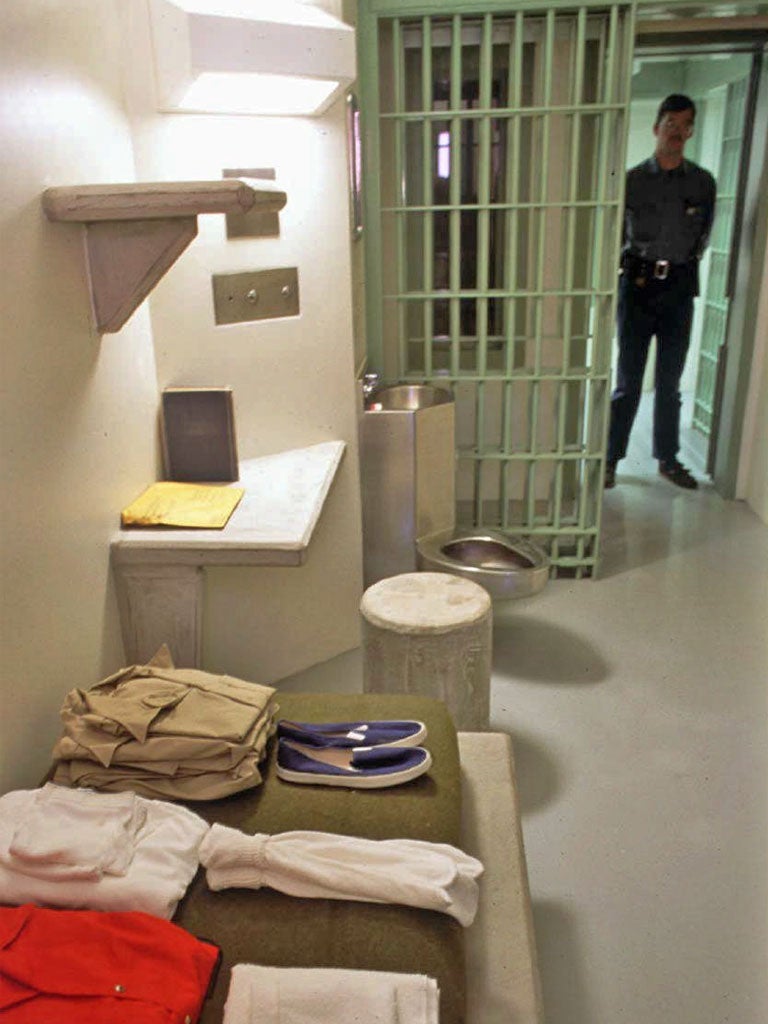The 'supermax': Concrete furniture and razor wire awaits Hamza in Colorado
Extradited suspects will experience a cold welcome at America's toughest jail

Your support helps us to tell the story
From reproductive rights to climate change to Big Tech, The Independent is on the ground when the story is developing. Whether it's investigating the financials of Elon Musk's pro-Trump PAC or producing our latest documentary, 'The A Word', which shines a light on the American women fighting for reproductive rights, we know how important it is to parse out the facts from the messaging.
At such a critical moment in US history, we need reporters on the ground. Your donation allows us to keep sending journalists to speak to both sides of the story.
The Independent is trusted by Americans across the entire political spectrum. And unlike many other quality news outlets, we choose not to lock Americans out of our reporting and analysis with paywalls. We believe quality journalism should be available to everyone, paid for by those who can afford it.
Your support makes all the difference.Chafing at a president's isolation from the outside world, Harry Truman once joked that the White House was "the crown jewel of the federal prison system". But the real crown jewel among US federal penitentiaries, where Abu Hamza and other terror suspects cleared for extradition yesterday may end up, is to be found on the bare high plains of Colorado, and it is no joke at all.
Its full name is The United States Penitentiary, Administrative Maximum Facility (ADX), in the town of Florence, a two-hour drive south of Denver. More commonly, it is referred to as the Florence supermax, built to house America's most dangerous and high-profile prisoners, the so-called "worst of the worst". Individual states have such facilities, but Florence is the only one operated by the federal government.
The prison, built to hold 490 inmates, opened in 1994, after a series of incidents at other supposedly top-security prisons in which guards were killed and convicted gang leaders managed to run their criminal empires from behind bars. Florence was specifically designed to ensure that nothing similar happened again. It has been dubbed the "Alcatraz of the Rockies" – but the former island prison in San Francisco Bay, commonly judged escape-proof, was as flimsy as a paper bag in comparison.
Supermax prisoners have absolutely no communication with the outside world and hardly any with each other. They are kept in solitary confinement for 23 hours each day; for one hour they are allowed out to a bigger cell with vaulted ceilings (known as "the empty swimming pool"). A skylight 4ft long and 4in wide serves as the only window. Even here, they are alone.
There is no mess hall or library where inmates in other prisons meet. Food is hand-delivered by guards to individual cells, which have tiny slit windows looking into an internal courtyard. The cells are furnished with a bed, stool and table made of poured concrete.
Cameras, sensors and motion detectors are everywhere. Inside there are 1,400 remote-controlled steel doors; outside there are 12ft-high razor-wire fences. Lasers and dogs protect the perimeters.
Florence is designed to prevent the prisoners from knowing where they are even within the prison. For their first three years, they are not permitted to come into contact with other prisoners. Over time, good behaviour can earn privileges like a television (showing educational, recreational and religious programmes). The very best on offer is a transfer out, to a less-secure prison.
The US inmates include Terry Nichols, sentenced to life for his part in the 1995 Oklahoma City bombing, and Ted Kaczynski, the "Unabomber".
Among the Islamist terrorist convicts are Richard Reid, the "Shoe Bomber" who tried to blow up a plane in December 2001, Zacarias Moussaoui, the suspected 20th hijacker in the 9/11 conspiracy, and al-Qa'ida operative Ramzi Yousef, a perpetrator of the 1993 World Trade Centre bombing.
Join our commenting forum
Join thought-provoking conversations, follow other Independent readers and see their replies
Comments